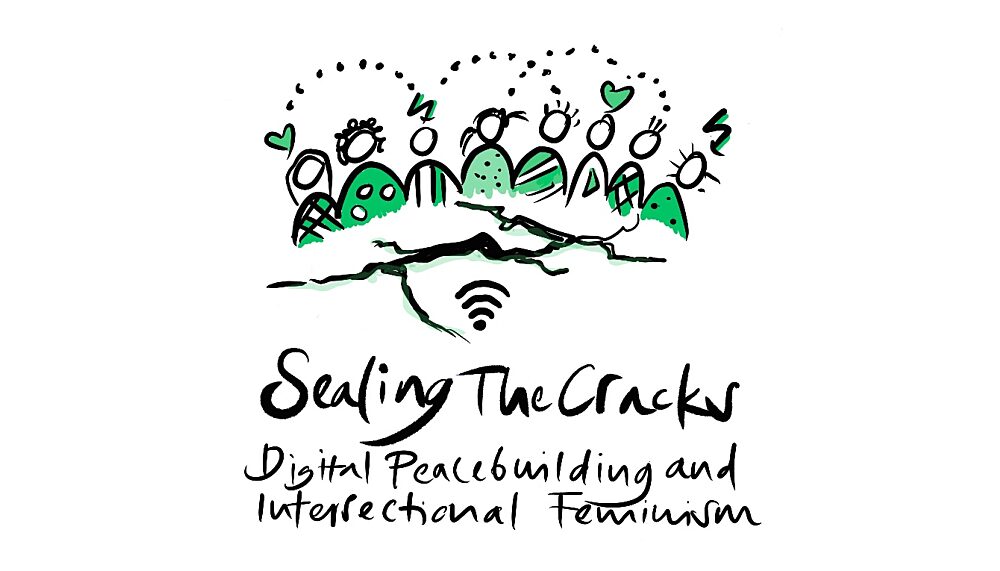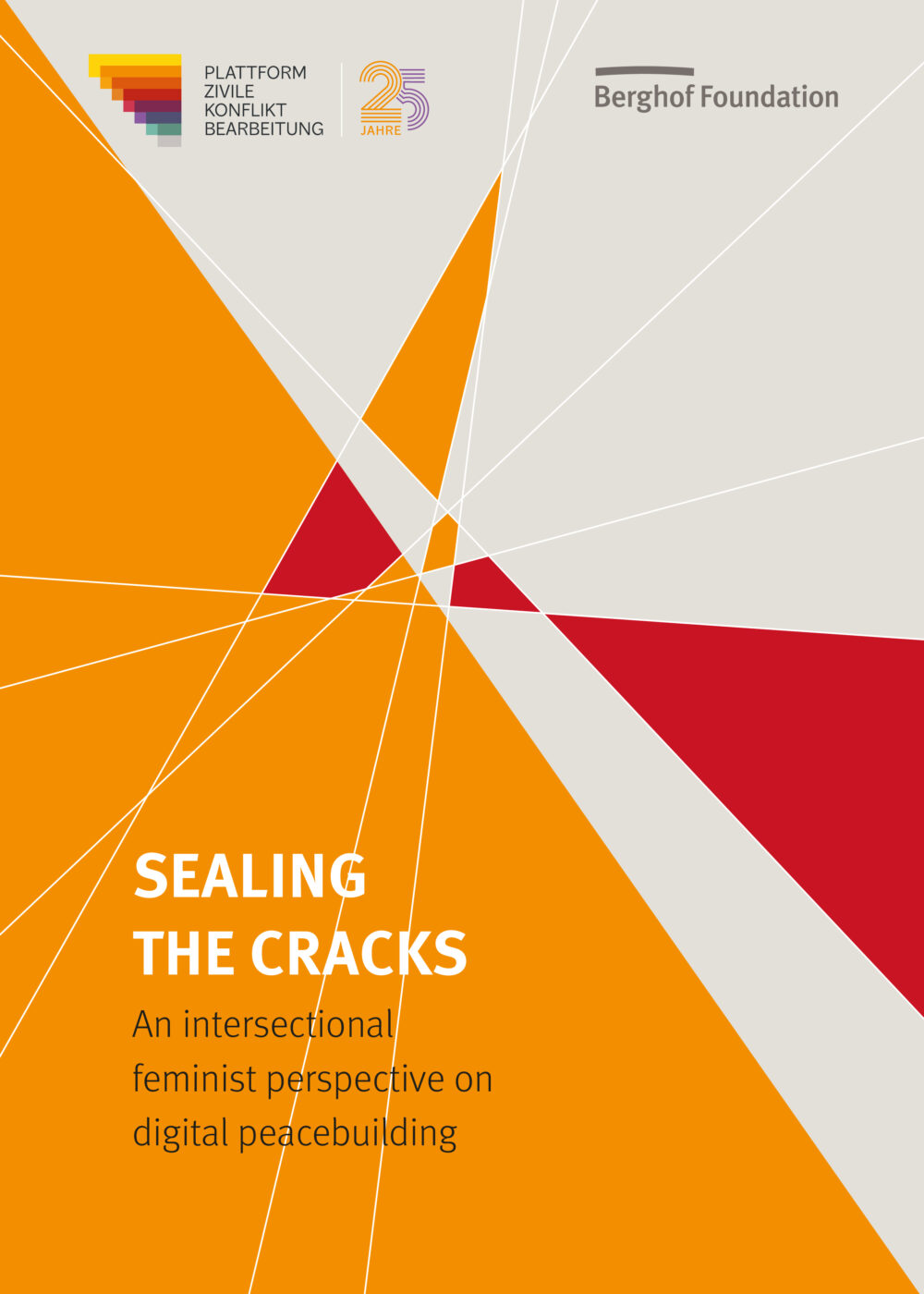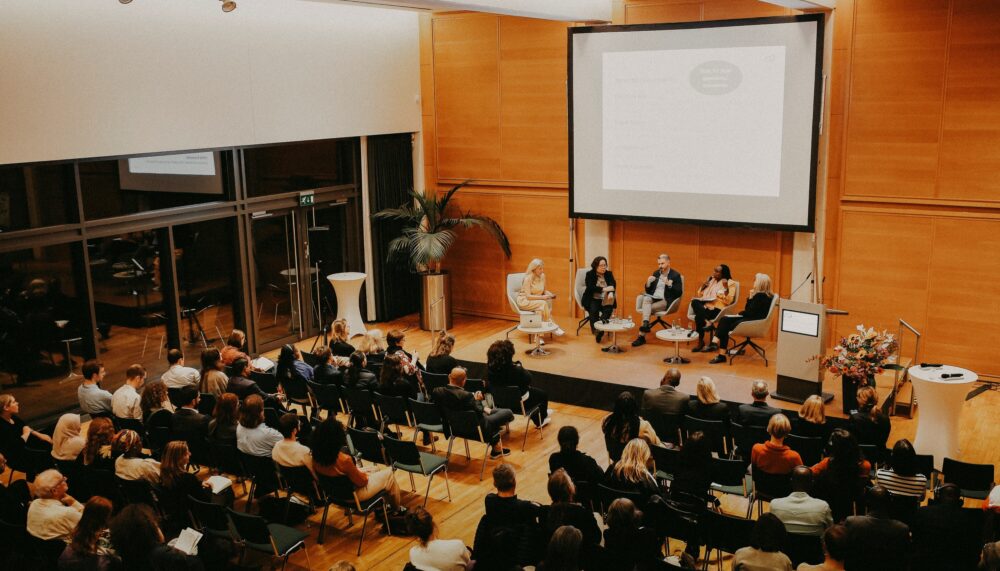BLOG POST | 21 Aug 2023
Unveiling the unseen: Applying a feminist lens to digital peacebuilding

Our latest report with Build Up explores the transformative power of feminist and intersectional perspectives on digital peacebuilding.
By Nina Strumpf
We know from our research and our experience in supporting peace processes that the outcomes are more sustainable when peacebuilders manage to include everyone affected. In order to design and implement inclusive peacebuilding programming, peacebuilders need to consider the multiple forms of discrimination that the people they work with may face.
Ownership and trust are indeed key to sustainable peace programming. Of course, this also applies to the use of digital tools.
Gender intersects with class, age, ethnicity, religion, or other identity markers. A young woman from a rural area might have different needs than a young woman who lives in the city; an elderly disabled man will identify different constraints for his participation in a peacebuilding programme than a young man. And a Christian might voice different needs than a Muslim or a Hindu. Intersectional peacebuilding approaches help to identify the different needs, interests, but also the agency of those who are affected, which should be considered when designing and implementing peacebuilding projects that aim to be inclusive and sustainable.
Digital = inclusive?
While many peace processes strongly depend on a face-to-face approach, digital peacebuilding is widely spread and promises to help design inclusive peace processes. Using online meeting platforms can, for example, level out challenges in physical mobility and might even be able to cut through lines of class when it comes to the question of who can take part in a meeting. But the use of digital tools also holds risks that need to be considered.
Digital peacebuilding
We understand digital peacebuilding as an emerging body of practice that includes both the use of digital technologies towards a peacebuilding objective, and the use of peacebuilding approaches in response to digital conflict drivers.

For our latest report, which we commissioned with Platform Peaceful Conflict Transformation, Build Up analysed what peacebuilders need to do to make digital interventions intersectional. The report also looked at the risk of perpetuating existing forms of oppression when using digital tools which can lead to further discrimination and exclusion of already marginalised groups. These findings and recommendations coincide with Germany's first months of implementing and operationalising a feminist foreign policy.
Digital tools can help break down barriers
Drawing from the conclusion of the report, digital tools can help to overcome marginalisation by creating safe spaces, for example in the form of anonymous online spaces where people are protected when they speak their mind regardless of class, ethnic background or gender. Digital tools also allow for “asynchronous engagement”, so participants can join the conversation on their own time and align their participation with their job schedule or care work responsibilities. They also can help to build ownership over processes for those who might otherwise not have been able to take part in a dialogue process in person due to limitations in their physical mobility.
Ownership through inclusion
Ownership and trust are indeed key to sustainable programming. This requires investing into a relationship with the people – right from the beginning of the process. Of course, this also applies to the use of digital tools. From the beginning, they need to be selected and, if necessary, adjusted together with those who work with them, in order to fit the context and realities people live in.
Watch the recording of our launch event of the report. The co-author of the report and three practitioners from Germany, Uganda and Lebanon, talked about the importance of intersectional digital interventions.
Harriet Adong, who works with rural communities in northern Uganda, described a situation in which communities felt that the researchers and peacebuilders imposed an approach without considering the local situation. In order to collect data, the researchers presented the local communities with a tool they did not understand. As a result, the communities were unable to effectively utilise the tool, rendering it useless. Instead of approaching people during peacebuilding or research projects with a predetermined set of digital means, she recommends involving them from the outset. This approach ensures that communities “have the power and voice to own those tools and are able to tell us this works and this doesn't work in our context”.
Online and offline safety is key
Working with digital tools also poses risks. When we look at discrimination online “we're still talking about the body of a person who is being affected by this oppression or a harmful practice”, said Jennifer Meininger, Executive Director of the German Section Women's International League for Peace and Freedom. This highlights the interconnectedness between the offline and online worlds and the continuation of discrimination and marginalisation in the online sphere. The safety of the people involved in the project should always be at the centre of all approaches and considerations. Precautions need to be taken. Policymakers and technology companies should be held responsible to ensure the safety of marginalised groups. We all need to push for legal reforms in areas such as data rights, AI and platform regulation.
Media contact
You can reach the press team at:
+49 (0) 177 7052758
email hidden; JavaScript is required


